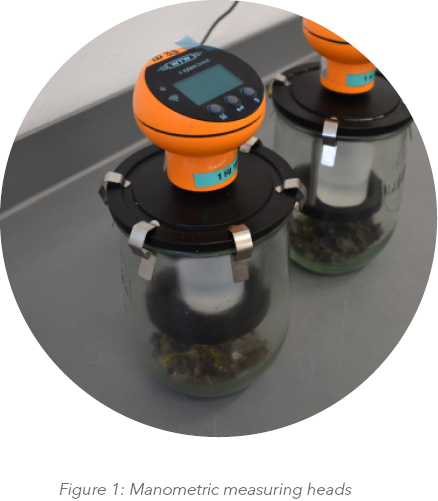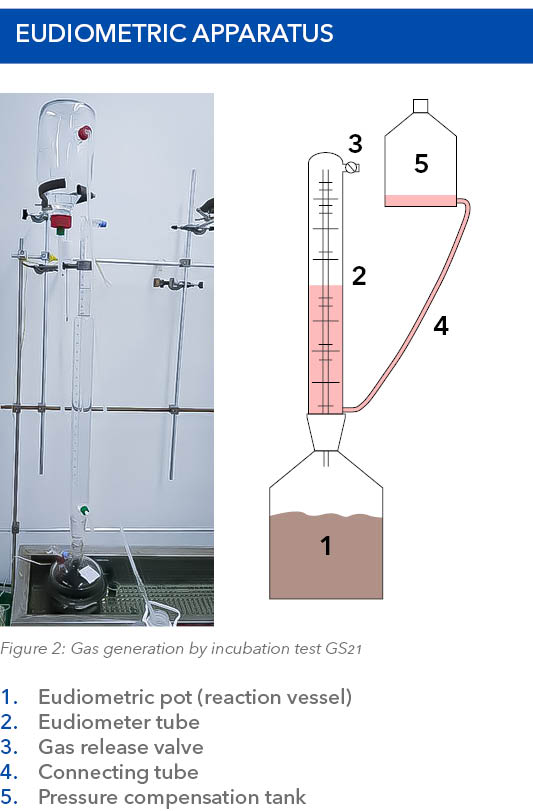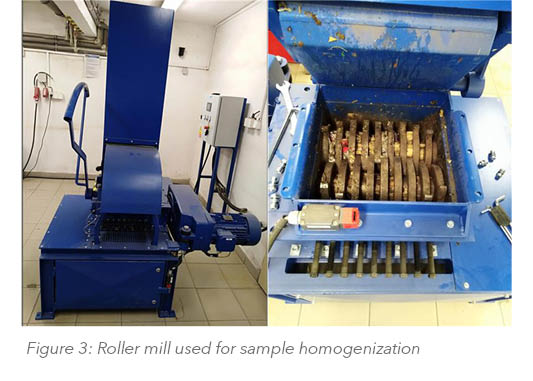Methods for Assessing the Biological Stability of Solid Waste
Published: October 2023
Download PDF
EnviroMail_09_Europe_Methods for Assessing the Biological Stability of Solid Waste
The biological stability of municipal solid waste represents a primary concern in assessing the long-term emission potential and environmental impact of landfills. There is an increasing interest in mechanical biological treatment (MBT) before landfilling to reduce both the mass and volume of the waste. Another important goal is to minimize the environmental impact of the waste post-disposal.
The assessment of waste‘s biological activity can be carried out through respiration tests, such as determining the respiration index at 4 days (AT4) or the overall gas-generating potential assessed
by the incubation test (GS21). ALS laboratories offer both of these methods for testing samples of municipal waste.
Respiration Index AT4
The Respiration Index AT4 (also known as the Ammonium-Nitrogen Index or simply AT4) is a parameter used in waste management and environmental science to assess the biodegradability
of organic matter in a given sample. It specifically quantifies the biological activity of microorganisms in the sample by measuring the amount of oxygen consumed over a four-day incubation period. All waste containing a biodegradable component (excluding mixed municipal waste and waste that has ceased to be biodegradable after the treatment), which is deposited in a landfill, must meet the parameter of this biological stability AT4. Currently, the legislation is provided by the Council Directive 1999/31/EC of 26 April 1999 on the landfill of waste but the maximum allowable values may vary within individual European Union member states. The value for AT4 parameter is set at 7 or 10 mg O2/g dry matter in most cases.

If the result of the AT4 parameter for a given sample is lower than the legislative value, the waste can be landfilled. This measure is implemented for several reasons. Low-activity samples do not significantly disrupt the stability of the landfill bed, resulting in reduced greenhouse gas production, particularly methane, and low odour emissions.
Thanks to this differentiation, a waste sample which is still biologically active can be further utilized for purposes such as energy processing. The determination of the respiration index is based on the Austrian standard ÖNORM S 2027-4.
The principle of AT4 measurement
AT4 respiration index measurement takes place under aerobic conditions using manometric measuring heads (MMH). If the tested waste sample is biologically active, it consumes oxygen, and simultaneously, carbon dioxide is generated in the MMH. To ensure the proper functioning of the MMH a pressure change in the bottle is necessary. This is induced by absorbing CO2 in a sodium hydroxide solution, which is directly proportional to oxygen consumption. The amount of oxygen consumed is calculated using the ideal gas law.
Since the sample weight, dry matter content, bottle volume, and temperature are known, the respiration activity of the sample can be calculated. During the measurement, it is necessary to monitor the pressure change. If the pressure change is around 150 hPa, the samples need to be aerated, meaning oxygen needs to be replenished.

Incubation test GS21
The Incubation test (GS21) assessing the overall gas-generating potential is another important
parameter for waste management. It determines the total gas production, indicating how many liters of gas are generated under anaerobic conditions during 21 days. While the legislative limit value is not set in all member states of the European Union, a value of 20 liters per 1 kg of dry matter of the sample is commonly used. If the result of the GS21 parameter for a given sample is lower than this specified value, the waste can be landfilled. Gas production determination is based on the Austrian standard ÖNORM S 2027-2.
The principle of GS21 measurement
Biologically active waste samples, under certain conditions (temperature 40°C, 100% humidity) and anaerobic conditions can lead to the release of so-called marsh gases. These gases include methane (CH4) and carbon dioxide (CO2), and optionally hydrogen sulfide (H2S) or its sulfur derivatives (mercaptans). These gases accumulate in an eudiometer tube, displacing water into a storage bottle and occupying its displaced volume. Based on the knowledge of the temperature of individual parts of the apparatus, atmospheric pressure, and the pressure of the displaced water column, the total gas volume can be calculated. Assuming ideal gas behavior, the ideal gas equation is used for calculation. From the sample weight and dry matter content, the total gas production for 21 days (GS21) can be calculated.
Sample preparation

Sample preparation is straightforward but time-consuming. The most critical step is the achievement of the proper sample homogeneity. The sample must be homogenized in such a way that all waste sample particles are smaller than 2 cm. Furthermore, it is necessary to determine the pH of the sample extract, and the pH value must fall within the range of 6-9. The pH values higher or lower than this range inhibit bacteria and can lead to the distortion of final results. The sample‘s dry matter content is also determined, which is used to adjust the correct sample moisture value before the actual measurement. In case the sample cannot be properly homogenized or the pH value is outside the specified range, the client is informed of this fact, and further measurement procedures are discussed on an individual basis.
Sample requirements
- Minimal sample weight: 2 kg for AT4; 5 kg for GS21
- Sampling material: plastic bag

